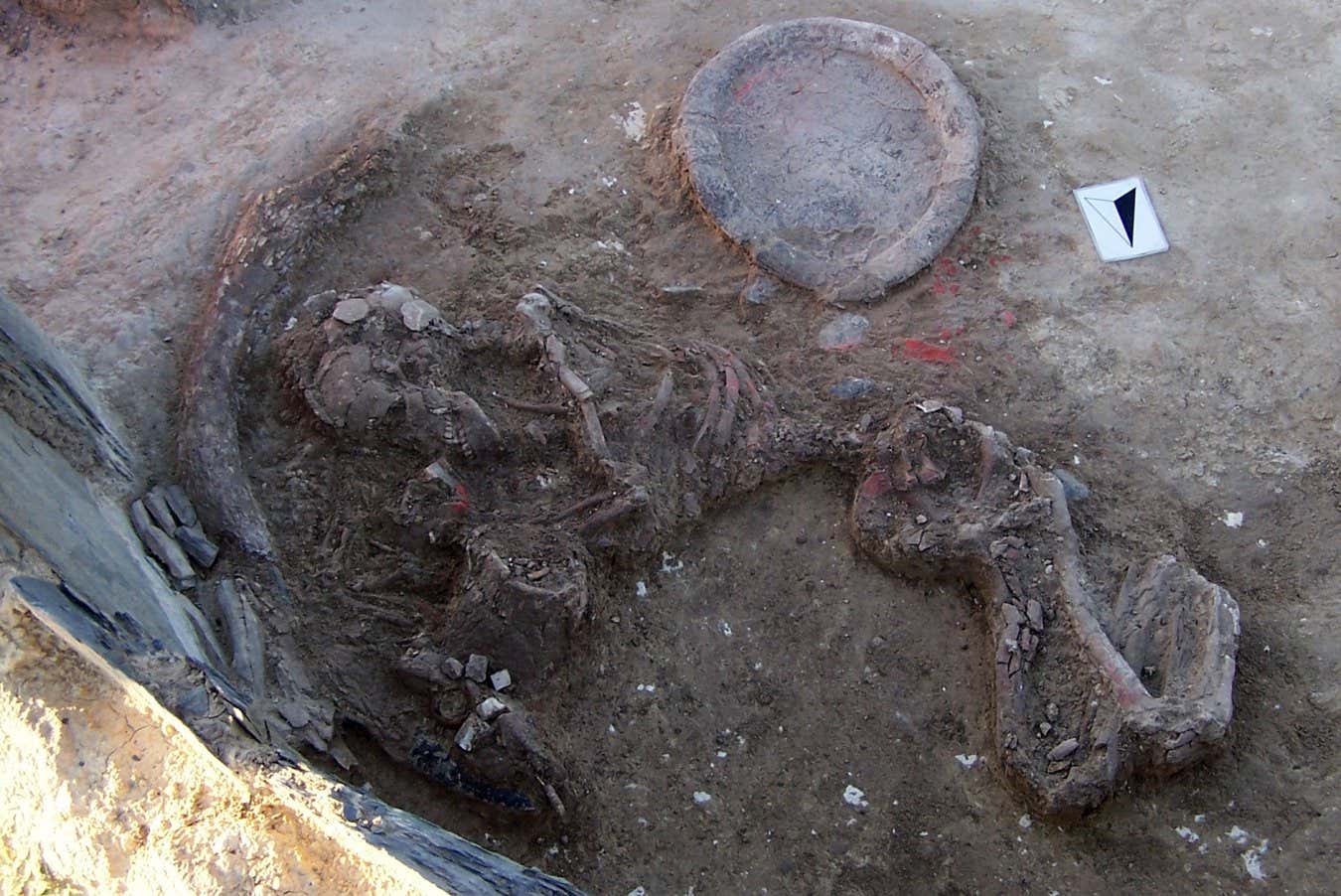Introduction
New research suggests that one of the most influential figures in a Copper Age Iberian society was a powerful female ruler, challenging previous assumptions that the leader was male. This discovery was made through molecular analysis of the individual’s teeth, shedding light on the social structure and gender roles in ancient Iberian civilizations.
The Iberian Copper Age
The Iberian Copper Age, which occurred approximately 4000 to 5000 years ago, marked a period of significant cultural and technological developments in what is now Spain and Portugal. This era witnessed the emergence of copper smelting, transforming the region’s societies.
The Ivory Lady
In 2008, archaeologists unearthed the remains of an individual known as the Ivory Lady at the Valencina site in southwest Spain. The burial site was adorned with lavish goods, including an ornate rock crystal dagger and ivory objects, such as an African elephant tusk. The Ivory Lady was also buried alone, distinguishing her from most individuals of that time. Researchers initially believed the individual to be male, based on the analysis of the skeleton.
The Discovery
A recent study led by Leonardo García Sanjuán at the University of Seville in Spain revisited the identification of the Ivory Lady’s gender. Through the analysis of a protein called amelogenin found in tooth enamel, the researchers determined that the figure was, in fact, female. Amelogenin is encoded by different genes found on the X and Y chromosomes, allowing for sex determination. The scientific findings challenge previous assumptions and highlight the importance of using advanced molecular techniques in archaeological investigations.
A Female Ruler
The newfound realization that the Ivory Lady was a female figure provides insights into the social and political landscape of Copper Age Iberian societies. The burial sites of children from this era did not contain valuable objects, suggesting that wealth inheritance was not common in this society. The researchers argue that the Ivory Lady’s high status must have been earned, challenging traditional notions of power and social hierarchy.
Implications and Future Research
This discovery opens up new avenues of research into the roles of women in ancient Iberian Copper Age societies. García Sanjuán emphasizes the need to explore the political and social influence of women in these complex civilizations, which currently remain poorly understood. The findings challenge long-standing narratives and offer fresh perspectives on the gender dynamics of ancient societies.








